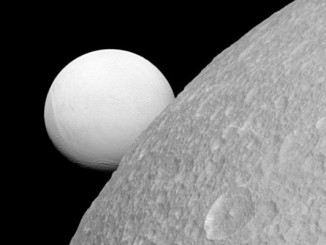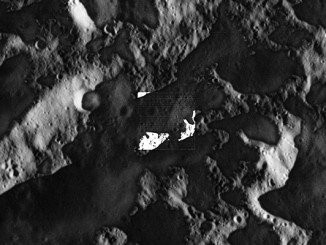
A brighter Saturnian moon
Although Saturn’s moons Dione (near) and Enceladus (far) are composed of nearly the same materials, Enceladus has a considerably higher reflectivity than Dione. As a result, it appears brighter against the dark night sky. This image was taken by NASA’s Cassini spacecraft in visible light with the narrow-angle camera on 8 September 2015.







